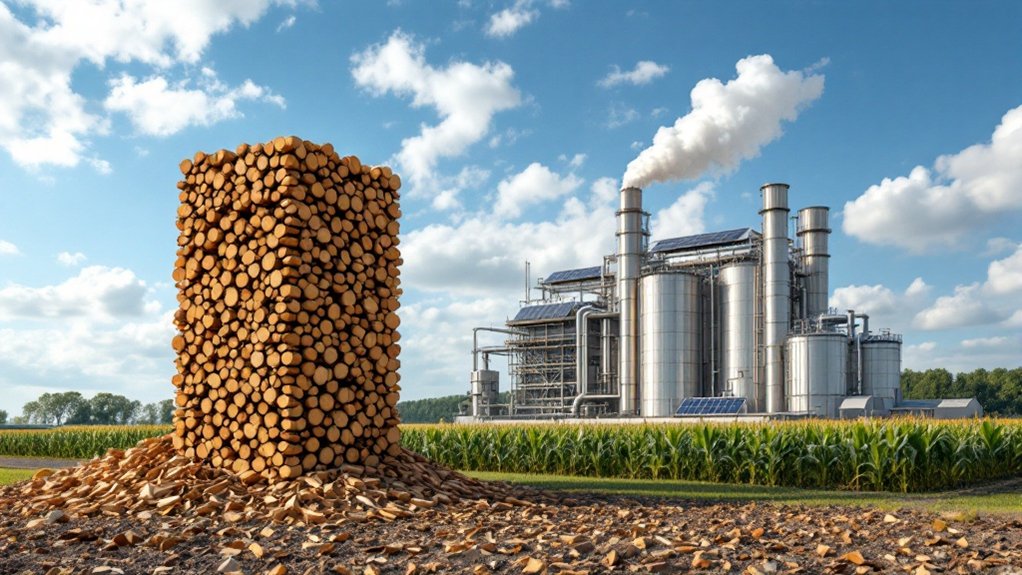Biomass energy taps into nature’s stored solar power through plants and animals – humanity’s original power source. It currently provides 5% of U.S. energy through methods like burning wood, converting garbage, and fermenting crops. While potentially carbon-neutral, it’s not perfect. The process can pollute more than coal and competes with food production. Still, it reduces foreign oil dependency and creates jobs. There’s more to this green energy story than meets the eye.

From ancient campfires to modern biorefineries, biomass energy has been humanity’s faithful companion. It’s pretty wild to think that until the mid-1800s, this was America’s primary energy source. Today, it accounts for a modest 5% of U.S. primary energy – not exactly setting the world on fire, but still significant.
What exactly is biomass energy? Simple: it’s stored solar power, courtesy of nature’s most reliable battery system – plants and animals. Through photosynthesis, plants capture sunlight and convert it into chemical energy. Then we humans come along and harvest this energy through various means – some elegant, some not so much. As a sustainable energy source, biomass helps reduce our dependence on conventional fossil fuels while promoting environmental conservation.
The conversion methods read like a chemistry textbook’s greatest hits: direct combustion (fancy talk for burning stuff), pyrolysis, gasification, and fermentation. Wood and wood residues are the heavyweight champions, providing 44% of all biomass energy. But there’s more to the biomass family – agricultural waste, municipal garbage, landfill gas, and even algae are getting in on the action. These methods can be divided into thermochemical and biochemical processes, each suited for different moisture content materials.
From burning to brewing, biomass energy harnesses nature’s leftovers – wood, waste, and even pond scum – to power our world.
Here’s where things get interesting – and a bit messy. Biomass energy can be carbon-neutral when managed properly. Key word: properly. Left unchecked, it can lead to deforestation and compete with food production. The industry misleadingly promotes wood pellet burning as clean energy, despite releasing more pollution than coal. Sure, it reduces greenhouse gas emissions compared to fossil fuels, but it’s not exactly emissions-free. When burned, biomass still releases air pollutants. Nature’s clean energy isn’t always squeaky clean.
The benefits are undeniable though. It reduces dependence on foreign oil, supports domestic industries, and helps manage waste. Plus, it’s renewable – trees grow back, crops regrow, and waste… well, waste keeps coming.
But there are drawbacks. It demands vast land areas, can cause soil erosion, and the efficiency varies wildly depending on how it’s converted. Transportation and storage? Not cheap. And let’s not forget the elephant in the room – the food versus fuel debate. Using farmland for energy crops might sound great until you realize those fields could be growing dinner instead.








